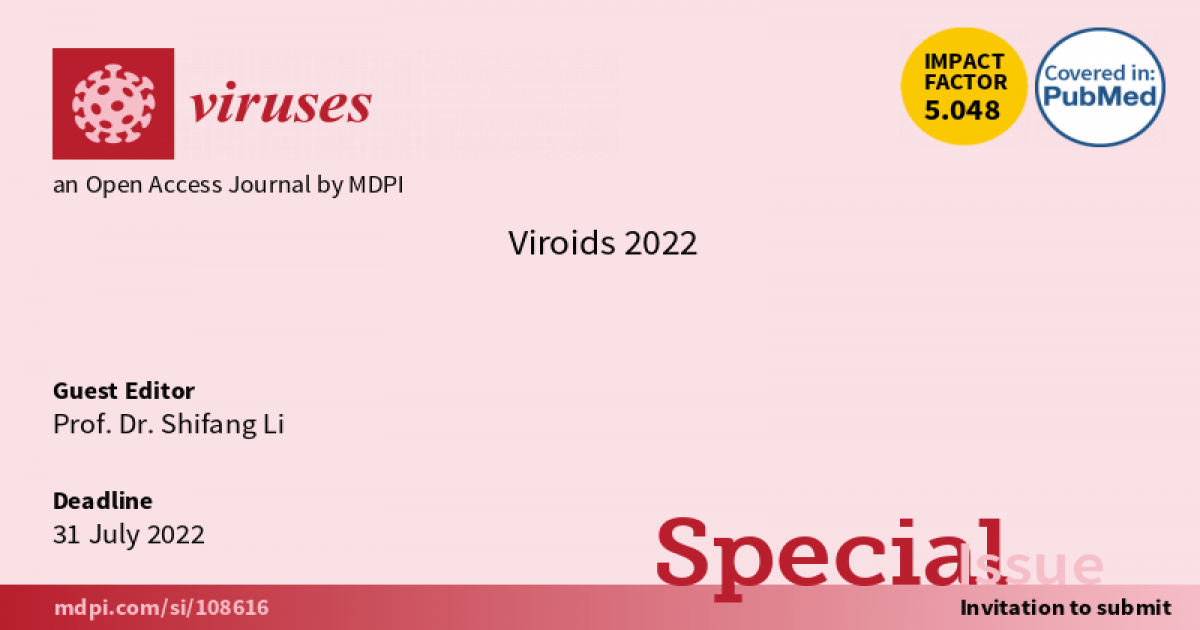Viroids 2022
A special issue of Viruses (ISSN 1999-4915). This special issue belongs to the section "Viruses of Plants, Fungi and Protozoa".
Deadline for manuscript submissions: closed (31 December 2022) | Viewed by 10148

Special Issue Editor
Special Issue Information
Dear Colleagues,
It has been fifty years since the first viroid was discovered in 1971. Through the efforts of the first and second generation of viroidologists, there has been great progress in the viroid research. Yet as time goes by, some of these veterans have passed away, and the rest would also gradually withdraw from the historical stage of viroid research. In this special moment, Viruses established a Special Issue called Viroid 2022, aiming to look back to the accomplishment of the half-century history of viroid research, and at the same time, raise the awareness of this new type subviral agent and related diseases, especially among the young biologists.
Prof. Dr. Shifang Li
Guest Editor
Manuscript Submission Information
Manuscripts should be submitted online at www.mdpi.com by registering and logging in to this website. Once you are registered, click here to go to the submission form. Manuscripts can be submitted until the deadline. All submissions that pass pre-check are peer-reviewed. Accepted papers will be published continuously in the journal (as soon as accepted) and will be listed together on the special issue website. Research articles, review articles as well as short communications are invited. For planned papers, a title and short abstract (about 100 words) can be sent to the Editorial Office for announcement on this website.
Submitted manuscripts should not have been published previously, nor be under consideration for publication elsewhere (except conference proceedings papers). All manuscripts are thoroughly refereed through a single-blind peer-review process. A guide for authors and other relevant information for submission of manuscripts is available on the Instructions for Authors page. Viruses is an international peer-reviewed open access monthly journal published by MDPI.
Please visit the Instructions for Authors page before submitting a manuscript. The Article Processing Charge (APC) for publication in this open access journal is 2600 CHF (Swiss Francs). Submitted papers should be well formatted and use good English. Authors may use MDPI's English editing service prior to publication or during author revisions.
Keywords
- viroid
- viroid-like RNA
- viroid replication
- viroid movement
- viroid structure
- viroid transmission
- viroid pathogenesis
- anti-viroid strategies
- viroid diagnosis
- size limit of viroid
- new viroid species
Benefits of Publishing in a Special Issue
- Ease of navigation: Grouping papers by topic helps scholars navigate broad scope journals more efficiently.
- Greater discoverability: Special Issues support the reach and impact of scientific research. Articles in Special Issues are more discoverable and cited more frequently.
- Expansion of research network: Special Issues facilitate connections among authors, fostering scientific collaborations.
- External promotion: Articles in Special Issues are often promoted through the journal's social media, increasing their visibility.
- e-Book format: Special Issues with more than 10 articles can be published as dedicated e-books, ensuring wide and rapid dissemination.
Further information on MDPI's Special Issue polices can be found here.






